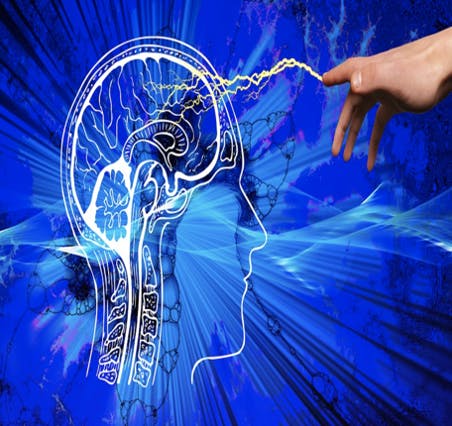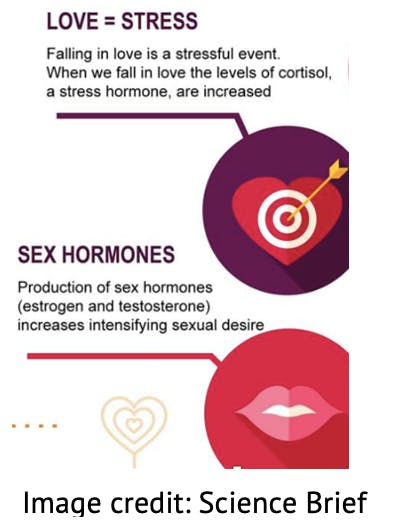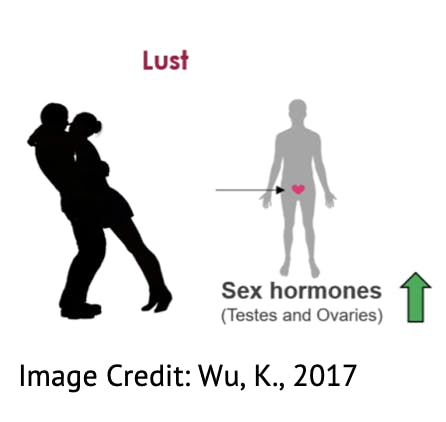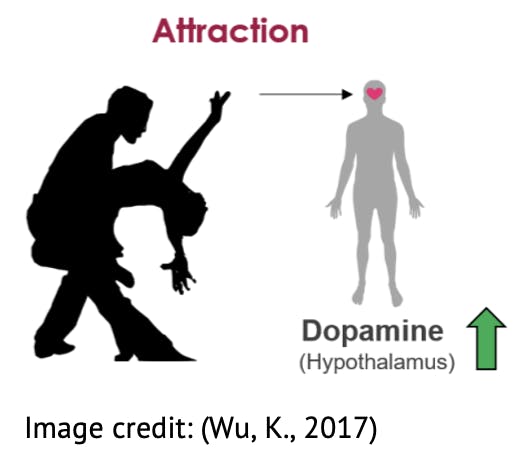TL;DR Science: Catching the Love Bug: Falling in Love + Hormonal Changes
By Erin Kang
September 07, 2022 · 5 minute read
Chemistry
Medicine
What would you say if I told you falling in love was more than just grand, romantic gestures and butterflies in your stomach but rather microscopic molecules altering your brain chemistry? Most people think of their awkward puberty phase when they heard the words “hormonal changes” but to researchers, hormonal changes can be attributed to falling in love.
Hormones of the Brain

Now, there are over 50 hormones circulating in your body this very instant, but researchers are only focused on a select few. The three most notable hormones being cortisol, testosterone, and follicle-stimulating hormone (FSH). Cortisol is considered to be your body’s primary stress hormone as it regulates the stress response (Thau et al, 2021). Testosterone, although known to many as the male sex hormone, is also present in women. Women need testosterone to balance their sexual drive and desire (Davis and Wahlin-Jacobsen, 2015). Follicle-stimulating hormone, more commonly known as FSH, helps the reproductive organs and manages a woman’s menstrual cycle (Australia, 2020).
The Study
Donatella Marazziti, a professor of psychiatry at the University of Pisa, joined forces with Domenico Canale, an endocrinologist, to conduct a study to determine how hormones change when you fall in love.
The researchers gathered 48 individuals and split them evenly into two groups based on whether they had recently fallen in love or not. The group that had fallen in love within the last 6 months reported that they spent at least four hours a day thinking about their special someone. The control group consisted of singles and individuals in a long-term relationship. The hormone levels being measured were collected through blood samples retrieved from all the participants.
The Outcome
The hormone level differences of each group were measured using a statistical t-test. The researchers found that cortisol levels were elevated in both the men and women of the group that had recently fallen in love compared to the control group. Testosterone levels proved to have surprising results. In men who recently fell in love, testosterone levels were actually lower than in men of the control group. On the other hand, women who were newly in love had higher testosterone levels than the women in the control group. The FSH levels were notably lower in men who recently fell in love than in men in the control group (Marazziti & Canale, 2004).
A reassessment of hormone levels was performed 12-18 months subsequently after the initial hormone evaluations. Marazziti and Canale found that the hormone levels of individuals still in their relationships were no different from that of the individuals in the control group. This could be an indication of a correlation between the end of the “honeymoon phase” in a relationship and normal hormone levels.
Digging Deeper
For the Love of Cortisol
As Marazziti and Canale discovered that the cortisol levels in both men and women who had recently fallen in love were heightened in comparison to those that were single or in a long-term relationship, stress was found to help encourage positive attachment between individuals which would overall reduce negative stimulus (Marazziti & Canale, 2004).

Other research has been conducted and found to corroborate the findings of Marazziti and Canale’s study. One study found that increases in cortisol levels in the early stages of falling in love may be due to partners experiencing things for the first time together, such as a first kiss or the uncertainty that a new relationship brings (Mercado & Hibel, 2017). I’m sure many of you know the nervousness one feels when emotions and passion are at their peak. The flushed cheeks and the pounding of your heartbeat in your ears when you’re with that special someone: that’s all the cortisol talking!
Lust and Testosterone

Testosterone levels were found to be lower in men who had recently fallen in love as seen in Marazziti and Canale’s study which may be attributed to low testosterone levels leading to more stable relationships in the long run (Durdiaková et al, 2017). Testosterone drives sexual desires and increases sex drive in women, supporting the finding that testosterone levels in women are heightened when falling in love (Wu, 2017). Thus, testosterone has proven to be a major stakeholder in the science of falling in love.
Dopamine – the Attraction Chemical

Dopamine, more commonly known as the happiness drug of the brain, is released in high amounts during the early stages of attraction and falling in love (Wu, 2017). It is considered to be a stimulating chemical that fills a person up with feelings of ecstasy and euphoria.
What’s Next?
Researchers have been studying the brain and how it regulates the hormones that course through your body, particularly during experiences such as falling in love, for decades. However, there is still much research that can be done to discover how hormones work together to trigger sensations of love within all of us.
TL;DR
Falling in love is quite a magical experience full of new romance and exciting times. In fact, the hormone levels in our brains change when we go through all the stages of love. Researchers Marazziti and Canale proved this in their study of cortisol, testosterone, and FSH levels, finding that cortisol and testosterone played major roles in love. So, the next time you catch yourself with the love bug, just remember your hormones are at play!
References
Australia, H. D. (2020.). Follicle stimulating hormone. healthdirect. Retrieved August 5, 2022, from https://www.healthdirect.gov.au/follicle-stimulating-hormone
BABKOVÁ DURDIAKOVÁ, J., CELEC, P., KOBOROVÁ, I., SEDLÁČKOVÁ, T., MINÁRIK, G., & OSTATNÍKOVÁ, D. (2017). How do we love? romantic love style in men is related to lower testosterone levels. Physiological Research, 66, 695–703. https://doi.org/10.33549/physiolres.933523
Davis, S. R., & Wahlin-Jacobsen, S. (2015). Testosterone in women--the clinical significance. The lancet. Diabetes & endocrinology, 3(12), 980–992. https://doi.org/10.1016/S2213-8587(15)00284-3
Thau L, Gandhi J, Sharma S. Physiology, Cortisol. [Updated 2021 Sep 6]. In: StatPearls [Internet]. Treasure Island (FL): StatPearls Publishing; 2022 Jan https://www.ncbi.nlm.nih.gov/books/NBK538239/
Marazziti, D., & Canale, D. (2004). Hormonal changes when falling in Love. Psychoneuroendocrinology, 29(7), 931–936. https://doi.org/10.1016/j.psyneuen.2003.08.006
Mercado, E., & Hibel, L. C. (2017). I love you from the bottom of my hypothalamus: The role of stress physiology in romantic pair bond formation and maintenance. Social and personality psychology compass, 11(2), e12298. https://doi.org/10.1111/spc3.12298
Wu, K. (2020, June 19). Love, actually: The science behind lust, attraction, and companionship. Science in the News. Retrieved August 5, 2022, from https://sitn.hms.harvard.edu/flash/2017/love-actually-science-behind-lust-attraction-companionship/
Did you enjoy this article?
About The Author
Erin Kang is a sophomore at the University of Florida studying Microbiology & Cell Science. She hopes to pursue a career in medicine. For any comments, questions, or concerns, contact Erin at erin@sciteens.org.